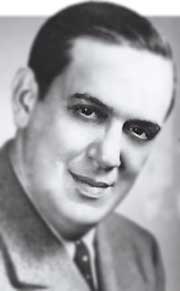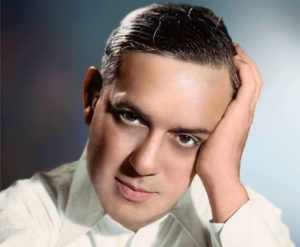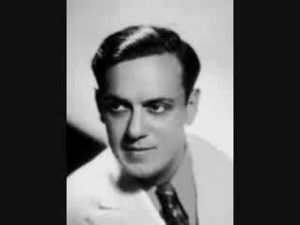 ERNESTO LECUONA, UNO DE LOS MAS PROLIFICOS COMPOSITORES QUE HA DADO CUBA. (2 de 2). VIDEOS
ERNESTO LECUONA, UNO DE LOS MAS PROLIFICOS COMPOSITORES QUE HA DADO CUBA. (2 de 2). VIDEOS
En cuanto a sus habilidades como intérprete, Ernesto Lecuona fue capaz de crear buena música, pero sus interpretaciones de piano finalmente variaron. “La mejor música de Lecuona es colorida y melodiosa, sensual y ardiente por turnos; muestra un considerable ingenio al imitar los efectos idiomáticos de guitarra en el piano”, escribió Dyer.
Lecuona fue descrito como “una figura melancólica y de complexión gruesa con famosos ojos oscuros”. Él era “un anfitrión popular que invitó a amigos a tocar música en su casa en Jackson Heights, Queens, aunque escaparía en caminatas solitarias cuando la compañía llegara a ser demasiado”, según el Diccionario de Biografía Hispana. “Además de querer tocar el piano y coleccionar esculturas en madera y piedra de los aztecas, mayas y antiguos incas peruanos, su mayor deleite era preparar café negro cubano fuerte”.
Otros pasatiempos que, según los informes, disfruta Lecuona incluyen la cría de pequeños animales y aves exóticas (particularmente mientras vivía en la zona rural de Cuba), leer misterios (se decía que Agatha Christie era una escritora favorita) y jugar al póker. Era fanático del béisbol y un coleccionista empedernido que atesoraba antigüedades, encendedores de cigarrillos y cajas de música.
Lecuona vivió en Nueva York y La Habana, no inesperado dado su horario de giras. Según los informes, también tenía casas en Tampa y Tallahassee, Florida. El presidente cubano Fulgencio Batista lo nombró agregado cultural a la Embajada de Cuba en los Estados Unidos en 1943. Con el golpe de estado de Fidel Castro en 1959, Lecuona dejó Cuba. Según los informes, en 1960 hizo un voto de no volver a tocar el piano hasta que Cuba fuera una nación libre. Eligió vivir en el extranjero, dividiendo su tiempo entre los Estados Unidos, España y las Islas Canarias. Lecuona estaba en Santa Cruz de Tenerife, en las Islas Canarias, recuperándose de un problema pulmonar cuando murió de un ataque al corazón el 29 de noviembre de 1963. Está enterrado en Hawthorn, Nueva York.
Como observó Carl Bauman en American Record Guide en 1997, “Lecuona, como quizás el destacado compositor de Cuba, ciertamente merece ser mejor conocido”. Creó más de 1000 composiciones, entre ellas 176 piezas para piano y 37 piezas orquestales durante su carrera. En una revisión posterior de otra grabación de Lecuona en esa misma publicación, John Boyer describe su música como “música latina destilada para las clases medias de la misma manera que Brahms y Liszt destilaron música húngara para el consumo de los alemanes del siglo XIX”.
Influyó en varias generaciones de músicos en todo el mundo
La música de Lecuona ha durado, influyendo en generaciones de músicos de varios géneros en todo el mundo. “Cuando era un niño que crecía en Australia, una de las bandas más populares en las ondas australianas era Ernesto Lecuona y sus Cuban Boys”, dijo Don Burrows, el músico de jazz australiano en una entrevista de 2001 con The Age. “En aquellos días, Cuba solía exportar música a todo el mundo y Ernesto Lecuona era tan importante para mí en esos días como Duke Ellington. Entonces, cuando tenía 10 años, sabía todas las canciones que Ernesto Lecuona había escrito alguna vez. Y estos muchachos de la banda simplemente no podían creer que alguien del otro lado del mundo conociera tanto a Ernesto Lecuona como ellos “.
Michel Camilo, el pianista de jazz dominicano, le dijo al sitio web All About Jazz: “La primera composición que recuerdo haber disfrutado de niño fue ‘La Comparsa’ del reconocido pianista cubano Ernesto Lecuona, interpretada por mi tío favorito al piano. Tocó la melodía. en su debut en el Carnegie Hall “.
“Pudo traducir los ritmos afrocubanos y ponerlos en cola”, dijo Camilo a América. “Técnicamente, estaba muy avanzado, en la tradición de Ignacio Cervantes, otro pianista y compositor cubano que lo precedió. Pero la mano izquierda de Lecuona es un vínculo directo con alguien como Chopin, con la capacidad de traducir las síncopas africanas”.
La música de Lecuona fue grabada frecuentemente por una amplia gama de artistas durante su vida y continúa siendo grabada por artistas mucho después de su fallecimiento. Entre los que han grabado canciones de Lecuona están Desi Arnaz, Guy Lombardo, Paquito D’Rivera, Katia Labeque, Los Super Seven y muchos otros.
 ERNESTO LECUONA, CUBA’S MOST PROLIFIC COMPOSER, PIANIST, CONDUCTOR. (2 OF 2). VIDEOS.
ERNESTO LECUONA, CUBA’S MOST PROLIFIC COMPOSER, PIANIST, CONDUCTOR. (2 OF 2). VIDEOS.
As for his abilities as a performer, Ernesto Lecuona was capable of creating great music, but his piano performances ultimately ranged from excellent to quite bad. “Lecuona’s best music is colorful and tuneful, sultry and firey by turns; he shows considerable ingenuity in imitating idiomatic guitar effects on the piano,” wrote Dyer. “There is nevertheless a wide gap between Lecuona’s best and his worst—bits of Rachamaninoff keep coming into view, along with keyboard figurations that sound like Liberace or the even efforts of cocktail pianists everywhere.”
Lecuona was described as “a heavy-set, melancholic figure with famously dark eyes.” He was “a popular host who invited friends to play music in his home in Jackson Heights, Queens, though he would escape on solitary walks when the company got to be too much,” according to the Dictionary of Hispanic Biography. “Besides liking to play the piano, and collecting wood and stone sculpture of the Aztecs, Mayas, the ancient Peruvian Incas, his greatest delight is brewing strong, black Cuban coffee.”
Other hobbies reportedly enjoyed by Lecuona included raising small animals and exotic birds (particularly while he was living in rural Cuba), reading mysteries (Agatha Christie was said to have been a favorite writer), and playing poker. He was a baseball fan as well as an inveterate collector who treasured antiques, cigarette lighters, and music boxes.
Lecuona lived in New York and Havana, not unexpected given his touring schedule. He also reportedly had homes in Tampa and Tallahassee, Florida. Cuban President Fulgencio Batista named him cultural attache to the Cuban Embassy in the United States in 1943. With Fidel Castro’s coup in 1959, Lecuona left Cuba. He reportedly took a vow in 1960 to never play the piano again until Cuba was a free nation. He chose to live abroad, splitting his time between the United States, Spain, and the Canary Islands. Lecuona was in Santa Cruz de Tenerife in the Canary Islands recuperating from a lung problem when he died of a heart attack on November 29, 1963. He is interred in Hawthorn, New York.
As Carl Bauman observed in American Record Guide in 1997, “Lecuona, as perhaps Cuba’s outstanding composer, certainly deserves to be better known.” He created more than 1000 compositions, among them 176 pieces for piano and 37 orchestral pieces during his career. In a later review of another Lecuona recording in that same publication, John Boyer describes his music as “Latin music distilled for the middle-classes in the same way that Brahms and Liszt distilled Hungarian music for the consumption of 19th Century Germans.”
Influenced Several Generations Of Musicians Worldwide
Lecuona’s music has lasted, influencing generations of musicians in various genres all over the world. “When I was a little boy growing up in Australia, one of the most popular bands on the Australian airwaves was Ernesto Lecuona and his Cuban Boys,” Don Burrows, the Australian jazz musician said in a 2001 interview with The Age. “In those days, Cuba used to export music to all over the world and Ernesto Lecuona was as important to me in those days as Duke Ellington. So by the time I was 10, I knew every song that Ernesto Lecuona had ever written. And these boys in the band just couldn’t believe that someone over the other side of the world knew as much Ernesto Lecuona as they did.”
Michel Camilo, the Dominican jazz pianist, told the All About Jazz website, “The first composition I remember enjoying as a child was ‘La Comparsa’ by Cuban renown pianist Ernesto Lecuona, performed by my favorite uncle at the piano. He played the tune in his debut at Carnegie Hall.”
“He was able to translate the Afro-Cuban rhythms and put them in tails,” Camilo told Americas. “Technically, he was very advanced, in the tradition of Ignacio Cervantes, another Cuban pianist, and composer who came before him. But Lecuona’s left hand is a direct link to someone like Chopin, with the ability to translate the African syncopations.”
Lecuona’s music was frequently recorded by a wide range of artists during his lifetime and continues to be recorded by artists well after his passing. Among those who have recorded Lecuona songs include Desi Arnaz, Guy Lombardo, Paquito D’Rivera, Katia Labeque, Los Super Seven, and numerous others.
Agencies/ Encyclopedia/ Internet Photos/ Extractor/ Excerpts/ YouTube/ Arnoldo Varona/ www.TheCubanHistory.com
THE CUBAN HISTORY, HOLLYWOOD.



 < ERNESTO LECUONA, Cuba's Most Prolific Composer, Pianist, Conductor. (2 OF 2). VIDEOS.
< ERNESTO LECUONA, Cuba's Most Prolific Composer, Pianist, Conductor. (2 OF 2). VIDEOS.



